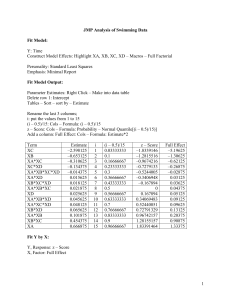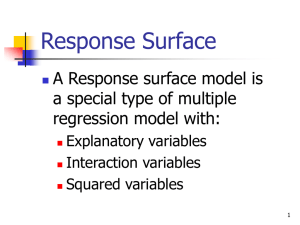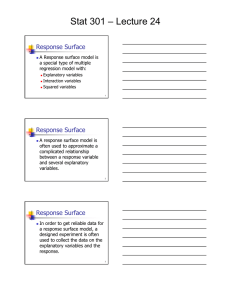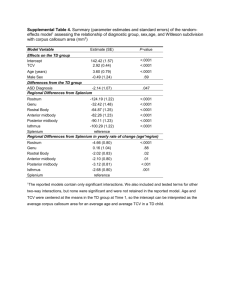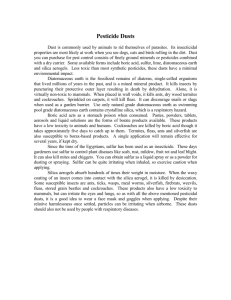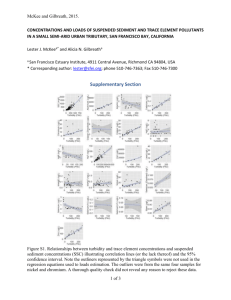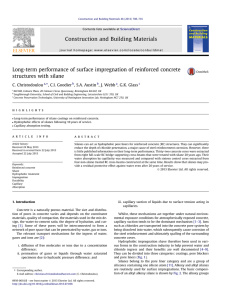Tennis Ball Experiment
advertisement
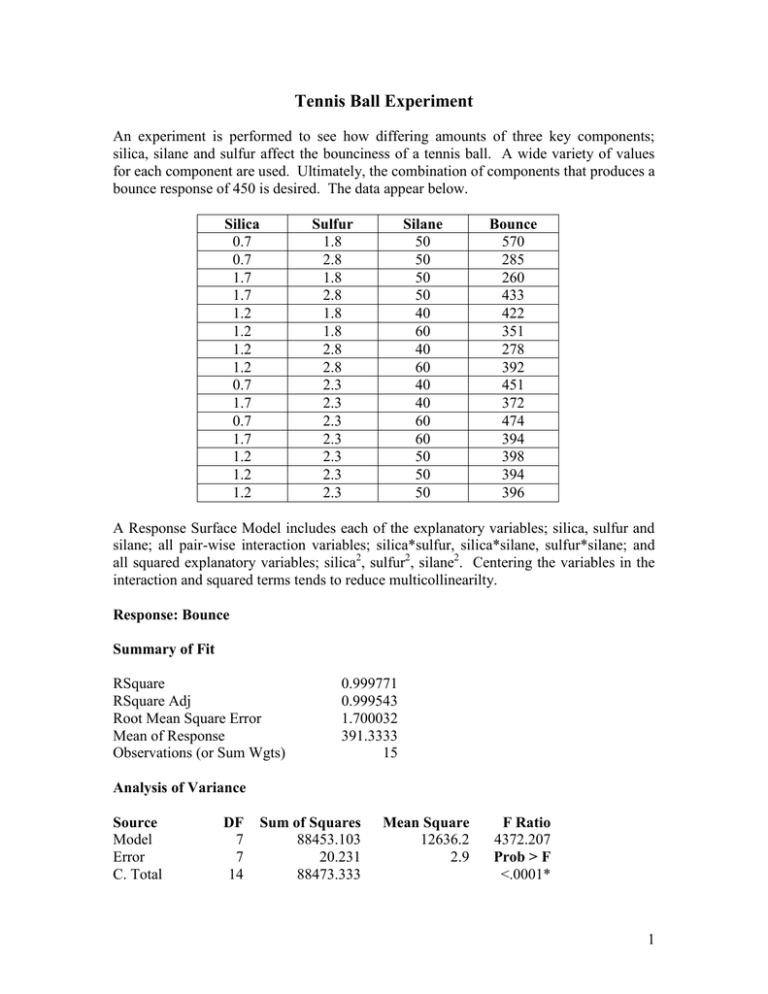
Tennis Ball Experiment An experiment is performed to see how differing amounts of three key components; silica, silane and sulfur affect the bounciness of a tennis ball. A wide variety of values for each component are used. Ultimately, the combination of components that produces a bounce response of 450 is desired. The data appear below. Silica 0.7 0.7 1.7 1.7 1.2 1.2 1.2 1.2 0.7 1.7 0.7 1.7 1.2 1.2 1.2 Sulfur 1.8 2.8 1.8 2.8 1.8 1.8 2.8 2.8 2.3 2.3 2.3 2.3 2.3 2.3 2.3 Silane 50 50 50 50 40 60 40 60 40 40 60 60 50 50 50 Bounce 570 285 260 433 422 351 278 392 451 372 474 394 398 394 396 A Response Surface Model includes each of the explanatory variables; silica, sulfur and silane; all pair-wise interaction variables; silica*sulfur, silica*silane, sulfur*silane; and all squared explanatory variables; silica2, sulfur2, silane2. Centering the variables in the interaction and squared terms tends to reduce multicollinearilty. Response: Bounce Summary of Fit RSquare RSquare Adj Root Mean Square Error Mean of Response Observations (or Sum Wgts) 0.999771 0.999543 1.700032 391.3333 15 Analysis of Variance Source Model Error C. Total DF 7 7 14 Sum of Squares 88453.103 20.231 88473.333 Mean Square 12636.2 2.9 F Ratio 4372.207 Prob > F <.0001* 1 Parameter Estimates Term Intercept Silica Sulfur Silane (Silica-1.2)*(Silica-1.2) (Silica-1.2)*(Sulfur-2.3) (Sulfur-2.3)*(Sulfur-2.3) (Sulfur-2.3)*(Silane-50) Estimate 561.07885 –80.25 –53.75 1.1 105.92308 458 –142.0769 9.25 Std Error 4.40724 1.202104 1.202104 0.060105 3.528414 3.400065 3.528414 0.170003 t Ratio 127.31 –66.76 –44.71 18.30 30.02 134.70 –40.27 54.41 Prob>|t| <.0001* <.0001* <.0001* <.0001* <.0001* <.0001* <.0001* <.0001* Contour Profiler 2
